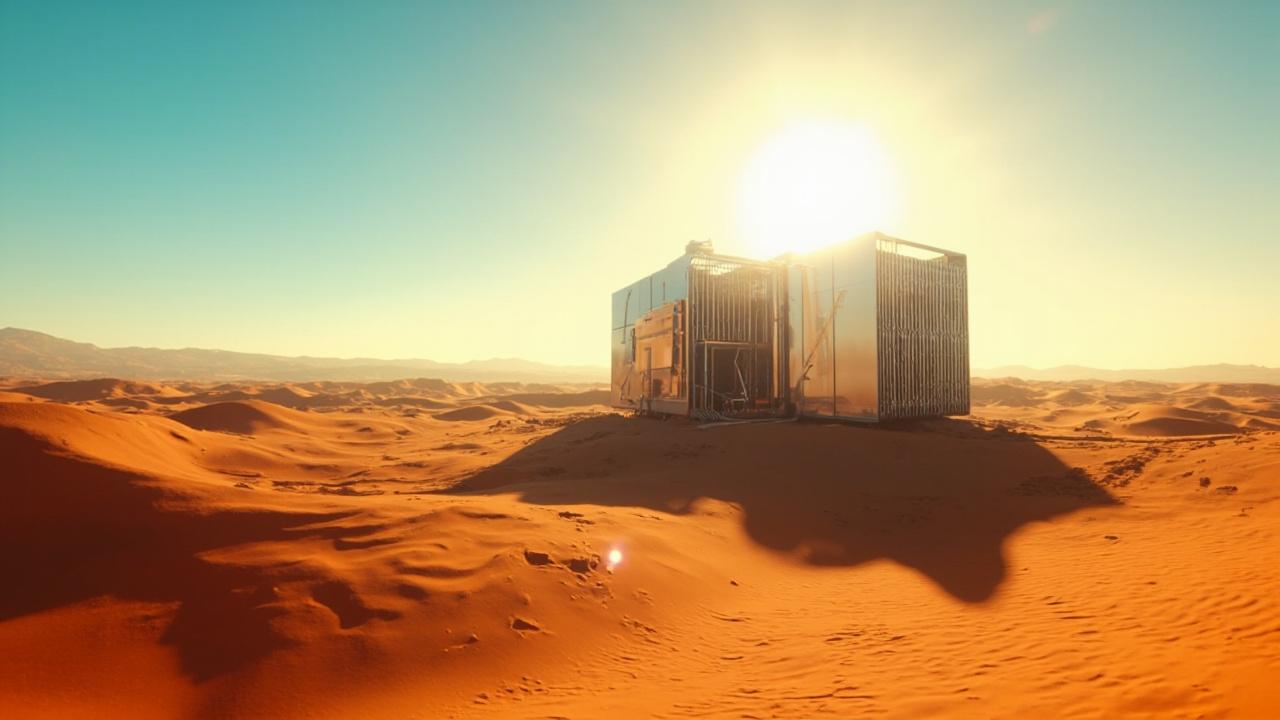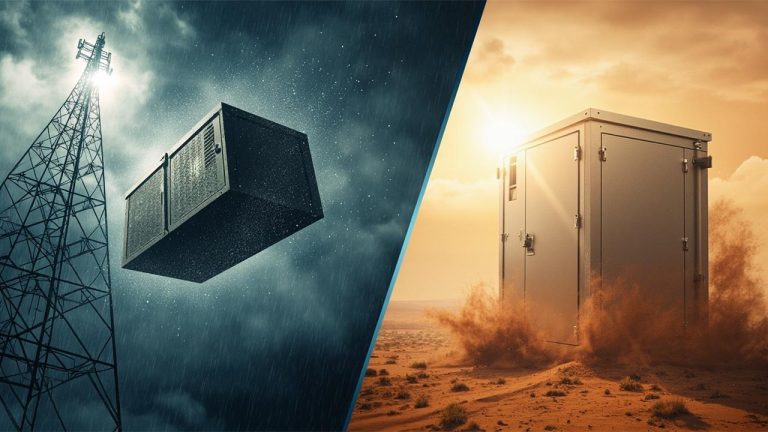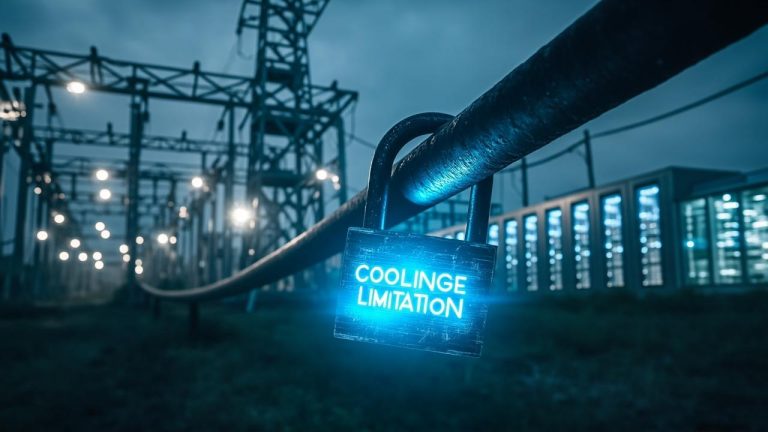Introduction
The escalating demand for data has led to an often-overlooked consequence: a massive thirst for water. Data centers, the engines of the digital world, consume vast quantities of water, primarily for cooling their heat-generating servers. Waterless cooling methods are now being examined as a means to mitigate this reliance.
Globally, these facilities consume billions of gallons of water annually, a figure that is rapidly increasing alongside our growing dependence on cloud computing, streaming services, and artificial intelligence. This dependence creates a strain that demands our attention and action.
Traditional data centers rely heavily on water-based cooling systems, such as cooling towers and chillers, to dissipate the immense heat produced by servers. These systems function by evaporating water, which absorbs heat and cools the surrounding air or equipment. While effective, this method is inherently wasteful, leading to significant water loss through evaporation and blowdown (removing mineral buildup).
As data centers continue to expand, their water footprint is becoming increasingly unsustainable, particularly in regions already facing water scarcity. The industry is grappling with the challenge of balancing computational power with environmental responsibility, a dilemma that requires innovative solutions and a fundamental shift in cooling strategies.
The core problem lies in the unsustainable nature of this water consumption, particularly in water-stressed regions. As populations grow and climate change intensifies, water resources are becoming increasingly scarce. Data centers, with their massive water demands, exacerbate this problem, putting pressure on local ecosystems and communities.
The future of data centers hinges on adopting waterless cooling technologies. This adoption is critical to ensure both environmental sustainability and long-term operational efficiency. The industry needs to proactively embrace these innovations to mitigate the environmental impact and ensure the continued growth of the digital economy without compromising the planet’s precious resources.
The Environmental Impact of Water-Cooled Data Centers
The environmental consequences of relying on water for data center cooling extend far beyond simple consumption figures. Data centers can significantly contribute to water scarcity, especially in regions where water resources are already strained. The constant demand for water to dissipate heat from servers can deplete local aquifers, reduce river flows, and impact the availability of water for agriculture, drinking, and other essential human needs.
This creates a direct competition for resources and can exacerbate existing social and economic inequalities. The ecological damage resulting from this process is difficult to reverse.
The Energy-Water Nexus: A Double Whammy
It’s also crucial to consider the energy required to pump, treat, and distribute the vast quantities of water needed for traditional cooling systems. This creates a “double whammy” effect, where water consumption drives up energy demand, which in turn can increase greenhouse gas emissions if the energy source is not renewable.
Moreover, the chemicals used in water treatment processes can have their own environmental impacts, potentially polluting waterways and harming aquatic life. The entire cycle, from water extraction to disposal, carries a significant environmental footprint.
Community and Regulatory Pressures
Furthermore, the heavy reliance on water by data centers can create tension with local communities and attract regulatory scrutiny. As water scarcity becomes an increasingly pressing issue, communities may object to data centers drawing heavily from shared water sources, particularly during droughts or periods of high demand.
Governments may respond by implementing stricter regulations on water usage, imposing fines or restrictions on data centers that fail to meet sustainability targets. Therefore, the adoption of technologies like waterless cooling become crucial for long-term viability and positive community relations for data centers.
The Rise of Waterless Cooling
The growing urgency to address the environmental impact of data centers has spurred the development and adoption of innovative cooling technologies that significantly reduce or eliminate water usage. These technologies offer a pathway towards a more sustainable future for the industry, mitigating the strain on precious water resources while maintaining operational efficiency. While traditional data centers rely heavily on water for cooling, these new approaches present viable alternatives that are gaining traction across the globe.
Several distinct types of *waterless cooling* are emerging as frontrunners in this shift. Air cooling, while a mature technology, continues to evolve with advancements in airflow management and free cooling techniques that leverage outside air. Immersion cooling, a more radical approach, involves submerging servers in a dielectric fluid, offering exceptional heat transfer capabilities.
Direct-to-chip cooling precisely targets heat removal at the component level, maximizing efficiency and minimizing overall energy consumption. Each of these methods presents unique advantages and disadvantages, making them suitable for different data center environments and operational requirements.
It’s crucial to understand that “waterless” doesn’t necessarily mean *zero* water consumption. Some systems may still utilize a small amount of water for supplemental cooling or humidity control. However, the overall water footprint is drastically reduced compared to traditional water-cooled systems.
The industry is moving towards a spectrum of solutions, with the ultimate goal of minimizing water usage while maintaining the performance and reliability that data centers demand. The decision to implement a particular technology should be based on a total cost of ownership analysis, taking into account capital expenditures, operational expenses, and environmental impact.
| Cooling Technology | Water Usage | Key Advantages | Potential Disadvantages |
|---|---|---|---|
| Air Cooling | Minimal to Low (some water for humidity control) | Relatively low initial cost, mature technology, easy to implement | Limited cooling capacity for high-density deployments, less energy efficient than other options |
| Immersion Cooling | Near Zero | Superior heat transfer, higher density, reduced energy consumption | Higher initial cost, maintenance concerns, adoption barriers |
| Direct-to-Chip Cooling | Near Zero | Improved performance, lower latency, greater energy efficiency | Complexity of implementation, higher cost |
Deep Dive Into Air Cooling
The most basic form of data center cooling comes from air. From the earliest server rooms to modern facilities, air cooling has been the workhorse of thermal management. It involves circulating air, often cooled, throughout the data center to absorb heat generated by servers and other IT equipment.

Traditional Air Cooling Methods
Traditional air cooling systems rely on Computer Room Air Conditioners (CRACs) and Computer Room Air Handlers (CRAHs) to cool and distribute air. These systems typically draw warm air from the hot aisle, cool it using chilled water, and then supply the cooled air to the cold aisle, where it is drawn into the servers. While effective for lower-density deployments, these methods can struggle to keep up with the increasing heat loads of modern servers and high-density racks.
Free Cooling and Airflow Management
To improve efficiency, many data centers are adopting advanced air-cooling techniques such as free cooling. Free cooling leverages outside air to cool the data center when the ambient temperature is low enough. This can significantly reduce the reliance on mechanical cooling systems, saving energy and reducing costs. Effective airflow management is also crucial.
Techniques such as hot aisle/cold aisle containment, blanking panels, and raised floors help to direct airflow and prevent hot air from mixing with cold air, improving cooling efficiency. However, even with these advancements, air cooling has limitations, especially for high-density deployments where the heat generated exceeds the capacity of air to effectively remove it. In these scenarios, alternative cooling methods, such as waterless cooling with immersion or direct-to-chip become necessary.
Immersion Cooling
The advantages of immersion cooling are numerous. Its superior heat transfer capabilities allow for significantly higher density deployments, meaning more computing power can be packed into a smaller space. This translates to reduced real estate costs and improved infrastructure utilization.
Furthermore, because the fluid absorbs heat more effectively than air or water, immersion cooling can lead to substantial reductions in energy consumption. Data centers using immersion cooling often see a decrease in their power usage effectiveness (PUE), resulting in lower operating costs and a smaller carbon footprint. Another major advantage of opting for a solution like immersion cooling is its ability to contribute to the creation of more sustainable and eco-friendly practices within the sector.
However, the adoption of immersion cooling isn’t without its challenges. Concerns around maintenance, initial investment costs, and the compatibility of existing hardware are often cited as barriers. Retrofitting an existing data center for immersion cooling can be complex and require significant upfront capital.
Additionally, the long-term reliability and environmental impact of different dielectric fluids are still under investigation. Despite these challenges, the potential benefits of immersion cooling – including improved energy efficiency, higher density, and reduced reliance on water – make it a compelling solution for the future of data center cooling, particularly as computing demands continue to escalate, and the need for efficient solutions such as waterless cooling becomes ever more critical.
| Advantage | Description |
|---|---|
| Superior Heat Transfer | More effective heat absorption compared to air or water. |
| Higher Density Deployment | Allows more computing power in a smaller space. |
| Reduced Energy Consumption | Lower PUE and operating costs due to efficient cooling. |
Direct-to-Chip Cooling
Here are some of them:
- Microchannels: These tiny channels are etched directly into or attached to the surface of the chip, allowing coolant to flow very close to the heat source.
- Liquid Cold Plates: These plates are attached to the chip and contain channels through which a cooling liquid circulates.
- Spray Cooling: Involves spraying a fine mist of coolant directly onto the chip surface, where it evaporates and carries away heat.
The benefits of direct-to-chip cooling extend beyond just efficient heat removal. By maintaining lower operating temperatures for critical components, this approach can significantly improve system performance. Overclocking, the practice of running processors at speeds higher than their rated specifications, becomes more feasible with effective direct-to-chip cooling, enabling higher computing power.
Reduced latency is another benefit, as cooler components generally operate faster and more reliably. Furthermore, the increased efficiency of heat removal can lead to substantial energy savings, contributing to a smaller carbon footprint and lower operating costs. This form of waterless cooling, while sometimes utilizing liquids, does so in a closed-loop system that minimizes or eliminates water consumption.
However, the implementation of direct-to-chip cooling solutions is not without its challenges. The design and manufacture of these systems can be complex, requiring specialized expertise and equipment. The cost of materials and installation can also be higher compared to traditional air-cooling methods.
Compatibility with existing server infrastructure may also be a concern, as direct-to-chip cooling often requires modifications to the server chassis and cooling infrastructure. Despite these challenges, the potential benefits of improved performance, reduced energy consumption, and enhanced reliability make direct-to-chip cooling an increasingly attractive option for data centers seeking to push the boundaries of computing power and efficiency.

Case Studies
Several pioneering data centers are already demonstrating the viability and benefits of embracing waterless cooling solutions. These real-world examples serve as powerful testaments to the potential for significant water conservation and improved energy efficiency within the industry. Companies are no longer just talking about sustainability; they are actively investing in and deploying innovative cooling technologies to minimize their environmental footprint and improve their bottom line.
One notable example is a large hyperscale data center located in a region with significant water scarcity. By implementing a combination of advanced air cooling techniques and strategic airflow management, they have drastically reduced their reliance on water-based cooling systems. They’ve reported a reduction in water usage by over 80% compared to traditional cooling methods. This was achieved through a multi-pronged approach:
Another compelling case involves a high-performance computing (HPC) facility that adopted immersion cooling to manage the extreme heat generated by its dense server racks. By submerging their servers in a dielectric fluid, they were able to achieve superior heat transfer and eliminate the need for traditional water-based chillers. The results were significant, with a reported energy consumption reduction of nearly 40% and a substantial decrease in their power usage effectiveness (PUE).
The success of these and other similar deployments underscores the tangible advantages of moving towards waterless cooling solutions and paves the way for wider adoption across the data center landscape. This creates a ripple effect, encouraging other organizations to assess their cooling infrastructure and explore opportunities for implementing more sustainable practices.
The Future Outlook
Looking ahead, the trajectory for data center cooling is undeniably shifting towards water conservation. Industry analysts project significant growth in the adoption of waterless cooling technologies over the next decade, driven by a confluence of factors. Stricter environmental regulations, particularly in water-stressed regions, will increasingly penalize inefficient water usage.
Public awareness and investor pressure are also mounting, pushing data center operators to prioritize sustainability. Furthermore, the economic benefits of reduced water consumption and lower energy bills are becoming increasingly compelling. This transition will also involve the creation of new standards for efficiency and environmental responsibility.
The widespread implementation of waterless cooling, however, will not be without its challenges. Retrofitting existing data centers with new cooling infrastructure can be a complex and costly undertaking. Overcoming initial capital expenditure hurdles and addressing concerns about the long-term reliability of new technologies will be crucial.
Moreover, a collaborative effort involving technology providers, data center operators, and policymakers will be essential to develop and implement effective water conservation strategies. This may also involve the development of government incentive programs to help promote a transition to waterless solutions.
Ultimately, the future of data centers hinges on embracing a water-conscious mindset. By prioritizing innovation, collaboration, and sustainability, the industry can mitigate its environmental impact and ensure its long-term viability. Embracing innovation such as direct-to-chip cooling, air cooling, and immersion cooling will allow data centers to become more sustainable in the future.
The move towards waterless cooling is not just an environmental imperative but also a strategic opportunity to enhance operational efficiency, reduce costs, and build a more resilient and responsible data center ecosystem. The rise of more energy efficient components will also allow for easier adoption of waterless cooling systems.
Frequently Asked Questions
What is waterless cooling and how does it differ from traditional liquid cooling?
Waterless cooling refers to cooling systems that utilize fluids other than water to dissipate heat. Unlike traditional liquid cooling, which relies on water’s thermal properties, waterless systems typically employ dielectric fluids with superior electrical insulation. This eliminates the risk of electrical shorts in the event of a leak, a critical advantage in electronics cooling.
What are the primary benefits of using waterless cooling systems?
The primary benefits of using waterless cooling systems revolve around enhanced safety and reliability. The dielectric fluids used are non-conductive, preventing damage from leaks. Additionally, many waterless coolants have higher boiling points than water, allowing for better heat transfer and potentially higher operating temperatures without the risk of boiling over or experiencing phase change issues that can affect performance.
What types of coolants are used in waterless cooling systems, and how do they compare to water?
Waterless cooling systems commonly use coolants such as synthetic oils, fluorocarbons, or other specialized dielectric fluids. These fluids offer superior electrical insulation compared to water, preventing shorts. Furthermore, they often have higher thermal conductivity and wider operating temperature ranges, allowing for more efficient heat dissipation in demanding applications.
Is waterless cooling more expensive than traditional liquid cooling solutions?
Generally, waterless cooling is more expensive than traditional water-based liquid cooling. The specialized coolants and often more intricate designs of the systems contribute to the higher cost. However, the increased reliability and safety benefits can offset the initial investment in applications where downtime or damage from leaks are unacceptable.
What are the typical applications for waterless cooling technology?
Waterless cooling technology finds typical applications in high-performance computing, data centers, electric vehicles, and other scenarios where efficient and reliable heat dissipation is critical. Industries requiring robust cooling solutions for sensitive electronics, like aerospace or military applications, also frequently utilize waterless cooling due to its enhanced safety and performance characteristics in demanding environments.




